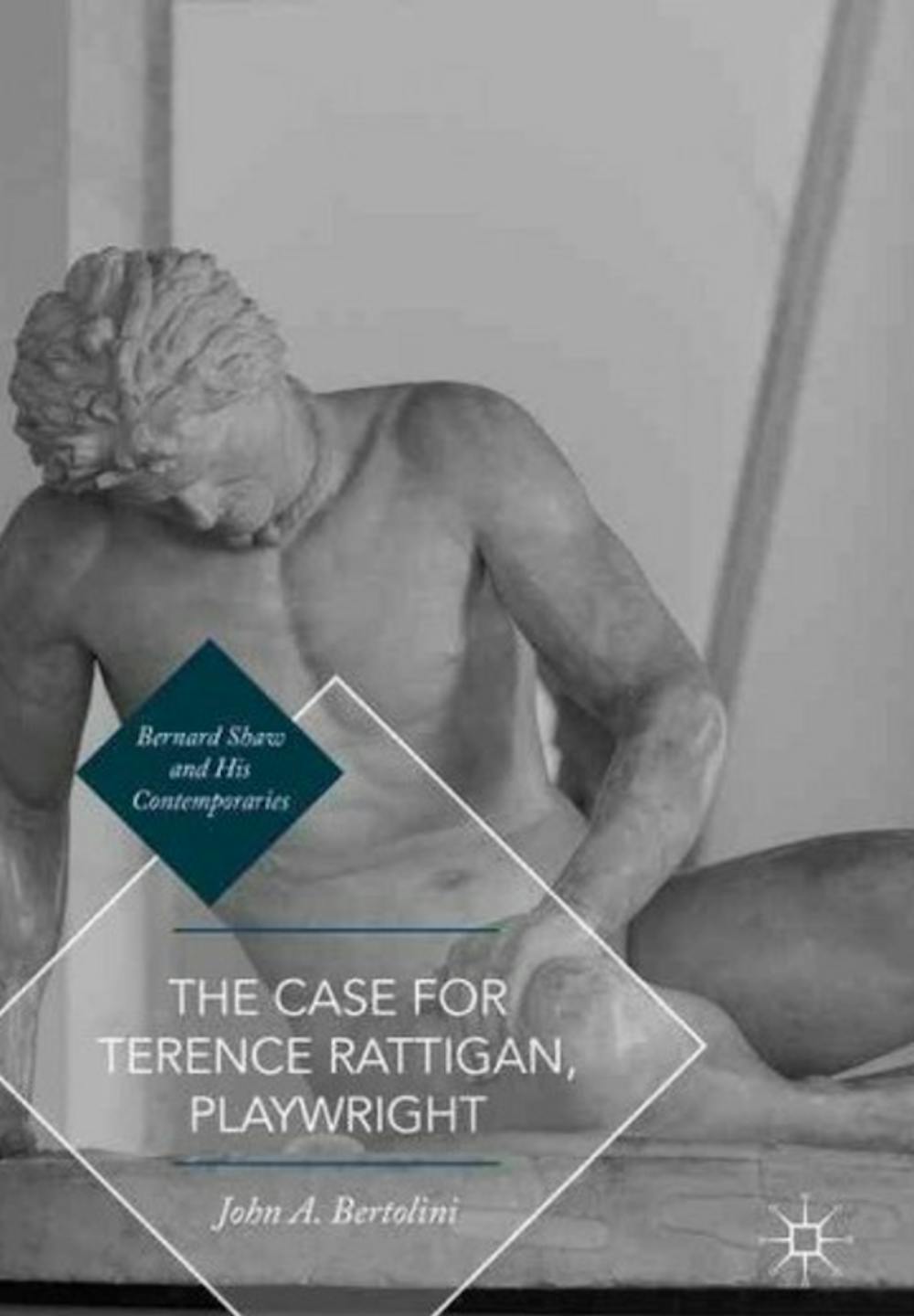John Bertolini first discovered the work of Terence Rattigan as a young boy at the movies, where he developed a taste for Rattigan’s “great theatrical skill.” It is his view that Rattigan is the preeminent British dramatist of the twentieth century, second only to George Bernard Shaw, who belongs as much to the nineteenth century as he does the twentieth.
A self-described devotee, Bertolini published his first book on Shaw, “The Playwriting Self of Bernard Shaw,” in 1991. At the college, Bertolini, who is Ellis Professor of English and the Liberal Arts, teaches courses that explore the works of Shaw and Rattigan and their relationship to one another.
His latest book, “The Case for Terence Rattigan, Playwright,” is a study of Rattigan that seeks, as he writes in the book’s preface, “to illustrate Peter O’Toole’s assertion that Rattigan is the best playwright of the twentieth century.”
The book is part of a series of scholarly works aimed to deepen the academic study of Shaw through the exploration of his contemporaries.
“What appeals to me in Shaw is his heroic optimism. He is the embodiment of the comic spirit of life,” Bertolini said. “But, I know there’s another side to life. And Rattigan seemed to me among modern British playwrights to be the one whose representation of the tragic side of life appealed to me the most.”
In his lifetime, Rattigan established himself as a kind of foil to Shaw, as a playwright of character and situation, rather than one of ideas.”The contrasting approaches to drama make Rattigan and Shaw, in a way, complementary playwrights. The reader gets more out of one by reading the other.
“[Reading Shaw and Rattigan together] highlights what is characteristic of each one. It enables you to see better what is unique to Rattigan and what is unique to Shaw,” he said. “[One can see] how much the ‘play of ideas’ really differs from the play of ‘character and situation.’”
However, as Bertolini points out, there are certainly elements of “character and situation” in Shaw, and “ideas” in Rattigan. And that while they are complementary, there are also many ways in which they resemble one another.
The greatest similarity is, simply, their great theatrical skill, the way in which they set up their effects and follow through with them. Rattigan maintained a high level of dramatic art from his first play to his last play, due in part to his natural flare for drama and his willingness to challenge the form. An example of this comes in “The Winslow Boy,” a courtroom drama that centers around the trial of a young boy but never actually has a scene in the courtroom.
“That reminds me of Shakespeare’s experimentation with dramatic form,” Bertolini said. “That is the sign of a real artist. The challenge of the form."
For Bertolini, the hallmarks of Rattigan’s style are his use of understatement and implication.
“A good playwright has to know what not to have his characters say and when to have them not say it,” Bertolini said. “It is drama achieved through something you expect the character to say, you’re waiting for them to say it, but they don’t say it. Or they say it when you least expect it, they hold off saying it. And that catches your attention. ‘Why isn’t she telling him that she loves him?’ And then you see why she isn’t, because it’s too painful to confront the rejection.”
What makes Rattigan a truly great playwright, says Bertolini, is the way in which he used understatement, implication, character and situation to deliver tragedies that illustrated his unique view of life: the sadness of it, the inevitability of defeat, how victory often feels like defeat. In the later years of his life, Rattigan abandoned comedy and focused solely on delivering this tragic vision.
“I think he stopped writing comedies because he no longer believed in the comic sense of life that animated Shaw all of his life, for example. It became impossible for him to write comedies. He just no longer had that as part of his vision of life,” Bertolini said.
In the more than forty years he has been teaching drama at the College, Bertolini says he has found that Rattigan’s plays and tragic vision tend to resonate particularly well with students.
“[Students] are carried along by his skill. By his ability to write one scene after another that keep their interest and stir up questions in the audience’s mind,” he said. “I think the overall vision of defeated humanity is pretty compelling. How many people realize all their dreams? How many people are completely happy in life? Very few. And he writes about that.”
He says that teaching and engaging with students at the College has greatly contributed to his study of Rattigan.
“I always write about what I teach, and I always teach what I write about. They have a symbiotic relationship for me. I get all sorts of stimulation from the ideas of students in class,” Bertolini said.
“Sometimes I’ll even use them as springboards to finding, extending and embellishing other ideas. It’s always a challenge to keep up with students in the classroom. They keep me on my toes. I love hearing their reactions to the plays, their ideas about them, where they see Rattigan doing this, that and the other thing and how that affects what he creates.”
Bertolini says that he hopes his teaching and scholarship will help ensure that the legacy of Rattigan will live on.
“I like to think of the future,” he said. “To think that when my students have children they will say, ‘Oh, here’s a great play that you should read.’ or ‘Here, I want you to look at a film of “The Winslow Boy.”’ I’m consoled by that, because I feel like then the work will never die.”
New Essay Collection Makes the Case for Terence Rattigan

Comments



